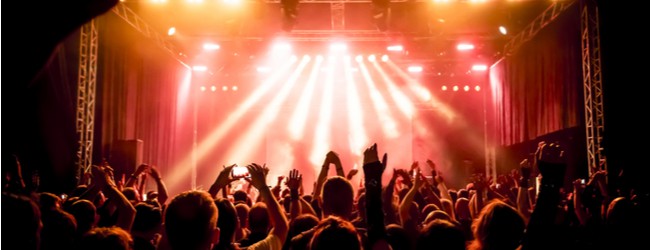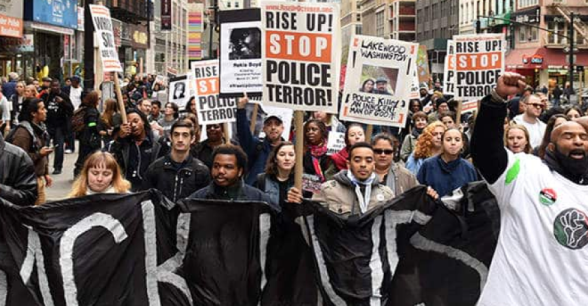28 Years After the ADA, Disabled People are Still Fighting for Accessible Event Seating
This winter, my friends and I bought tickets to see “50 Shades Freed,” because hate-watching and laughing at the franchise’s terrible movies is a tradition that we started when the first film premiered for Valentine’s Day. When we got to the movie theater, we were unsurprised to find that there were only a few designated wheelchair accessible seats, each with only two companion seats next to it. Like we have to do at almost every movie, we split up so that my friend who uses a wheelchair could sit with some of us (while the rest went to the row behind us).
Despite the fact that the Americans With Disabilities Act requires venues to have accessible seating at events like movies, concerts, theatre shows, live performances, and sporting events, many disabled people still have difficulty attending these events and fully participating.
“I can rarely sit with a group, since wheelchair seating is usually my seat plus one companion,” says Erin Hawley, a writer, digital content creator, and game accessibility consultant from Keyport, NJ. Hawley faces the same issue my friends and I often do—if there is accessible seating, it is often separated in its own area and not spread throughout the event space, with options for people to sit with a group. “This assumes disabled people don’t need to or want to sit with others,” she says.
Some events are also designed as standing room only, and don’t have any seating available for people who do need it. Or if they do, it’s more expensive. A couple of summers ago, I was thinking about seeing a live performance with some friends in the Boston area, but we found out the hours-long performance didn’t have seating, though you could purchase a seat in a separate area at an extra cost. I opted not to go, because I’m not able to stay still on my feet for that long without severe pain, and I didn’t think it was fair that my friends would all have to pay extra money just to sit with me.
The ADA requires that venues don’t charge higher prices for accessible seating as for other seating in the same section, but this doesn’t stop venues from only having accessible seating at a higher price point. “I wanted to attend a show with a friend who had a season subscription to a particular venue, but my friend’s seats were not accessible, and when we asked if it were possible to move to accessible seats so that I could go with my friend, we were told that yes, it was possible—for a significant additional fee,” says Danni Green, a professional accessibility specialist, multiply-disabled activist, and Expressive Arts Therapy student in Boston, MA.
Performers face similar venue access issues. “As a pianist, the issues I’ve experienced range from having to use freight elevators to gain access to the stage, to not being able to get to the stage at all, without being lifted in my wheelchair up at least one—and sometimes several—flights of stairs,” says Dr. Stefan Sunandan Honisch, a disabled scholar and musician. He’s also had to leave concerts he wanted to attend because the building didn’t have a ramp or a working elevator.
There’s a solution that many event organizers and venues are missing: Actually talking to disabled people and hiring multiple accessibility experts (who have disabilities themselves) to assess the space and make recommendations. “I think that event venues and organizers skip actually including disabled people in their planning. We know what we need, we know how to access the community, we know how to actually make an event accessible,” says Ace Ratcliff, a non-binary freelance writer and artist who focuses on disability rights and works from Oakland, California. “Getting us involved is so important!”
For events to be accessible, they need to be radically, meaningfully accessible. There can’t be areas of the event that aren’t accessible to everyone (a common example for wheelchair users is, “This space is accessible, but the bathroom isn’t!”). Event organizers need to consider questions like: Is there seating at this event? How large are the seats, and can everyone fit into them? Is there a variety of different seating options? Is there accessible seating spread throughout the venue, where mobility aid users and physically disabled people can sit among friends or by themselves? Are there multiple views of the event stage from accessible seats?
Beyond just event seating, there are many more considerations that should be taken into account, such as captions and subtitles, fragrance- and smoke-free environments, temperature control, strobe light warnings, and American Sign Language interpreters. “The idea of equality needs to expand: When we say we want the same experience that non-disabled people have, we mean all around!” explains Ace.
Danni recommends that event organizers look at accessibility as a necessity: “Have a ‘yes’ mindset when approached about an accessibility need. As in, ‘Yes, let’s figure out how to meet that need,’ instead of ‘No, we can’t do that.’”
With a few changes, I think we can create a future where my friends and I can hate-watch any movie we want together. Accessible seating doesn’t need to be a constant hassle for disabled people—it can be an expected part of our daily lives.
About Rooted In Rights
Rooted in Rights exists to amplify the perspectives of the disability community. Blog posts and storyteller videos that we publish and content we re-share on social media do not necessarily reflect the opinions or values of Rooted in Rights nor indicate an endorsement of a program or service by Rooted in Rights. We respect and aim to reflect the diversity of opinions and experiences of the disability community. Rooted in Rights seeks to highlight discussions, not direct them. Learn more about Rooted In Rights




“There’s a solution that many event organizers and venues are missing: Actually talking to disabled people and hiring multiple accessibility experts (who have disabilities themselves) to assess the space and make recommendations.”
Hmmm…that seems like such a common theme–not listening to the experiences of the disabled.